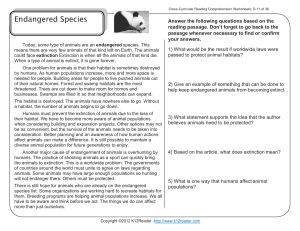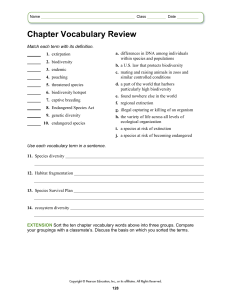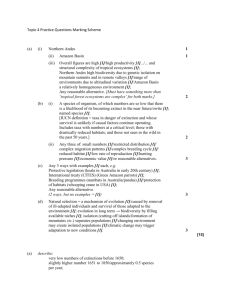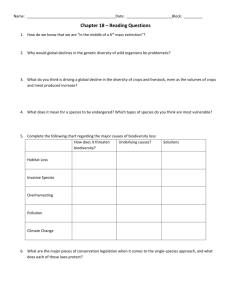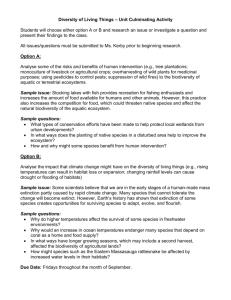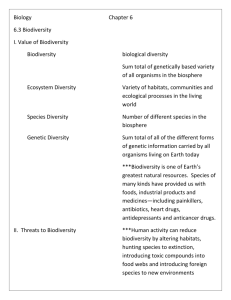27 Conservation
advertisement
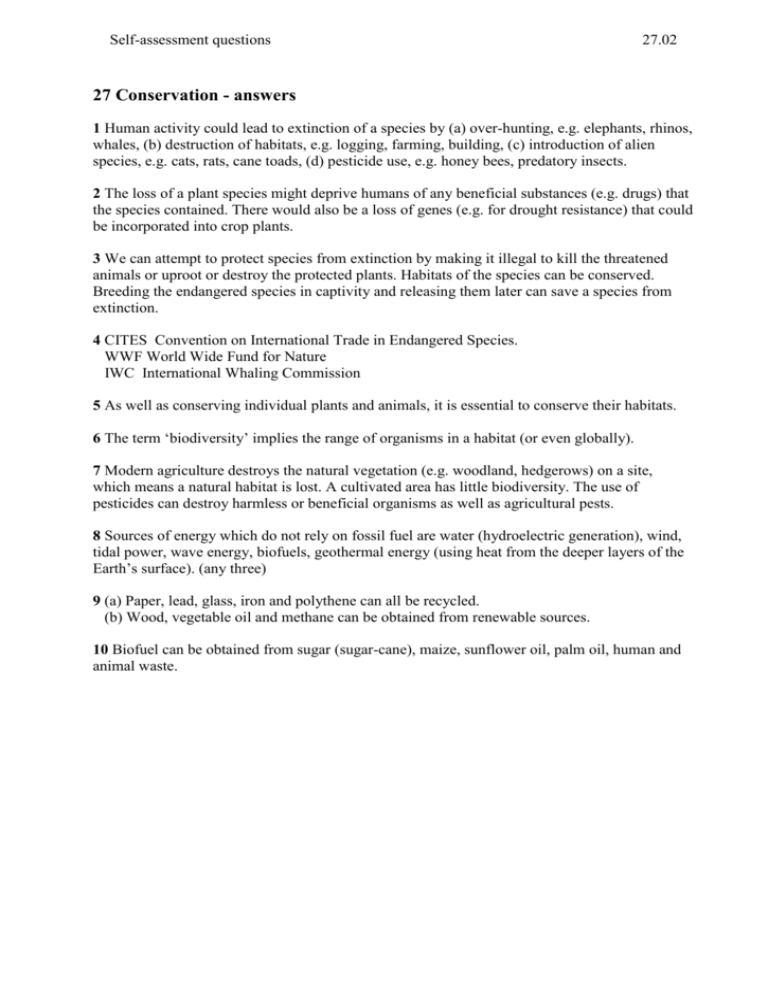
Self-assessment questions 27.02 27 Conservation - answers 1 Human activity could lead to extinction of a species by (a) over-hunting, e.g. elephants, rhinos, whales, (b) destruction of habitats, e.g. logging, farming, building, (c) introduction of alien species, e.g. cats, rats, cane toads, (d) pesticide use, e.g. honey bees, predatory insects. 2 The loss of a plant species might deprive humans of any beneficial substances (e.g. drugs) that the species contained. There would also be a loss of genes (e.g. for drought resistance) that could be incorporated into crop plants. 3 We can attempt to protect species from extinction by making it illegal to kill the threatened animals or uproot or destroy the protected plants. Habitats of the species can be conserved. Breeding the endangered species in captivity and releasing them later can save a species from extinction. 4 CITES Convention on International Trade in Endangered Species. WWF World Wide Fund for Nature IWC International Whaling Commission 5 As well as conserving individual plants and animals, it is essential to conserve their habitats. 6 The term ‘biodiversity’ implies the range of organisms in a habitat (or even globally). 7 Modern agriculture destroys the natural vegetation (e.g. woodland, hedgerows) on a site, which means a natural habitat is lost. A cultivated area has little biodiversity. The use of pesticides can destroy harmless or beneficial organisms as well as agricultural pests. 8 Sources of energy which do not rely on fossil fuel are water (hydroelectric generation), wind, tidal power, wave energy, biofuels, geothermal energy (using heat from the deeper layers of the Earth’s surface). (any three) 9 (a) Paper, lead, glass, iron and polythene can all be recycled. (b) Wood, vegetable oil and methane can be obtained from renewable sources. 10 Biofuel can be obtained from sugar (sugar-cane), maize, sunflower oil, palm oil, human and animal waste.



